- Home
- Thomas Keneally
A Commonwealth of Thieves Page 29
A Commonwealth of Thieves Read online
Page 29
The Bryants were escaping a colony in which, despite what the Supply and the Dutch snow had brought in from Batavia, the ration was reduced again shortly after their departure, this time to 3 pounds of rice, 3 pounds of flour and 3 pounds of pork per week. Hunger would again have the effect of driving people to raid gardens, and to make small thefts. In another sense the absent Bryant had a lasting effect on the scrawny, misbegotten society of New South Wales. It was reported to Phillip that he had frequently been heard expressing what was a common sentiment on the subject amongst convicts—that he did not consider his marriage in this country as binding. It was a marriage for the sake of the alternative world in which fortune had placed him, but he asserted to other convicts that it would not bind him should he return to reality, the established and accustomed earth. Phillip, hearing of Bryant's attitudes after his escape, saw how dangerous this concept was to his community, to all the business of inheritance and ordered life of which monogamy was the keystone. Men who were proven to serve their time and had the means, if former sailors, to sign on with visiting ships and return to the outside world might share that belief and leave behind destitute wives and children who would become a burden on the settlement. Phillip issued an order that no timeserved convict could leave behind in the colony any wife or children who could not support themselves.
“This order was designed as a check on the erroneous opinion which was formed of the efficacy of Mr. Johnson's nuptial benediction.” Here was another instance of Arthur Phillip declaring that New South Wales was not virtual reality; it was their world, and the contracts made here bound people to the same pieties as contracts made anywhere. Thus, he intended to centre their lives in the colony. In so doing, he was making the first families of a non-Aboriginal Australia.
Meanwhile, David Collins thought, with some injustice towards Mary, that Will took her along only as a means of preventing her from betraying his great scheme. Certainly, she saw her connection with Bryant as the chief hope for her children, but in all other aspects of her life that we know of, she was no mere token of fallen womanhood, but a vigorous and equal participant. Like many a male, Bryant might have had fantasies of flight, but he was not likely to get away without Mary as fellow-spirit and conspirator. Indeed Captain Tench would later declare that he admired both of them, and he obviously saw Mary as something more than the convict's token, southwest Pacific wife. The journey they were about to make, to this day one of the two longest open-boat excursions in maritime history, could not have been made without a united, refined, and mature sense of purpose.
twenty-four
THE FOLLOWING YEAR, the by now notorious William Bligh, restored to normal naval command after the mutiny on the Bounty, and promoted to post-captain, called again at the Dutch port of Koepang in Timor and heard the tale of the Bryant party's voyage from the Dutch officials who were still talking about it. The Dutch governor at Koepang gave Bligh a journal entitled Remarks on a Voyage from Sydney Cove, New South Wales, to Timor, which was said to be Bryant's true account. All we retain of it is what an enthused and remarkably sympathetic Bligh extracted for inclusion in his own journal. He did not have time to copy more than a quarter of the account, and one of his officers was able to get more of the account of Bryant and the others down. The other source for the Bryant journey is an extraordinary document written by at least one of the escapees and entitled Memorandums, later published in London in 1792.
Early in the journey, we learn by reading Bligh and the Memorandums, only two days sail north of Sydney, the Bryant party put in through the surf to a creek where so much coal lay “we thought it was not unlikely to find a mine … we picked with an axe as good coals as any in England—took some to the fire, and they burned exceedingly well.” It is interesting that there is a certain patriotic pride in that “as any in England.” Bryant saw himself as a Briton, fulfilling a destiny—freedom—and the remark implied that he, Mary, and the others saw England as their destination, not some lotus-eating island in the Pacific.
It was hard and skilled work beaching the boat and getting it out again through the waves. But despite the perils, regular landings and rest periods were essential for the health of all the parties to the adventure.
There was a night when rain drenched them, and a typical coastal storm in which the seas ran “mountains high”—that recurrent nautical description—while two of the crew bailed feverishly. What nursery rhymes and songs did Mary sing to soothe the children at such a time? Resting ashore when a landing was possible, they kept a fire burning and a system of watches for the natives, many of whom along the coast of New South Wales and the reef-girt shores of what is now Queensland were friendly, though some were hostile. With all the aplomb of such gentlemen as Tench or Phillip, Bryant claimed that shooting above the natives' heads always dispersed them. As they travelled north, temperatures increased. And although the draught of their cutter was not deep, the Irish convict Martin needed all his navigational skills amongst the reefs, islands and inlets of the Barrier Reef coastline. At one point the party was driven out of sight of land for “near three weeks” and by the time they reached a beach again were “much distressed for water and food.”
As they passed Cape York into Torres Strait, between New Guinea and Australia, they encountered several small islands occupied by natives. The Torres Strait Islanders were of Melanesian background, but had interbred with coastal Aboriginals. These natives' canoes were more sophisticated than those found in Sydney Cove— “The sails seemed to be made of matting.” The escapees “fired a musket over them, and immediately they began firing their bows and arrows at us.”
The party crossed the Gulf of Carpentaria, that great indentation on the northern Australian coast, in four and a half days. Then Martin navigated them across the treacherous Timor Sea where they met the southern shore of Timor and reached the Dutch port of Koepang on 5 June 1791. Their prodigious open-boat journey had been eclipsed only by the earlier journey of Bligh, after he had been cast off the Bounty two years before. They had covered 3,254 nautical miles and it had taken them, rests ashore included, ten weeks.
As they had agreed, they explained themselves to the Dutch Governor of Timor, Mynheer Timotheus Wanjon, as survivors from the wreck of a whaler named Neptune in Torres Strait, and claimed “that the captain and the rest of the crew probably will follow in another boat.” This was a credible enough scenario. “The governor,” Martin wrote, “behaved extremely well to us, filled our bellies and clothed double with every[thing] that was wore on the island.”
Koepang proved a delightful place, favoured for recuperation by those who had suffered fevers in Batavia. Its landscape of hills and headlands was spectacular, but it was not free of curses—an ugly skin disease marred some of its inhabitants. But there was no question that after the journey they had made, it represented deliverance to the Bryant party. Adding a further dimension to the stylishness of their escape, Bryant and his party drew bills on the British government and so were supplied with everything they needed by the administration.
BY THE TIME OF THE escape of the Bryants, already a larger third flotilla, the Third Fleet, had been authorised by Whitehall. The contract was made in November 1790, and nine ships would sail on 27 March 1791. For the overall contract, Camden, Calvert and King were to be paid up to £44,658 13 shillings 9 pence, but they had plans beyond that—six of the Third Fleet transports were also chartered to trade in Bombay cotton on the company's account after they had discharged their duty of convict transportation. The other ships of the group would go whaling off New South Wales and in the Southern Ocean. Camden, Calvert and King's own ships carried about £30,000 in coin, to lay the foundations of monetary exchange in New South Wales.
The government and its bureaucracies such as the Navy Board, having made an outrageously inappropriate contract, seemed content that the disaster of the Second Fleet should go unreported in London. But via the Second Fleet ships returning, a letter from a literate unnamed female
convict from the Lady Juliana would make its eloquent way into the London Chronicle of 4 August 1791, and arrest the attention of the British public. The woman reflected on seeing the victims of Camden, Calvert and King and their officers brought ashore. “Oh, if you had but seen the shocking sight of the poor creatures that came out of the three ships, it would make your heart bleed. They were almost dead, very few could stand, and they were obliged to fling them as you would goods, and hoist them out of the ships, they were so feeble; and they died ten or twelve a day when they first landed…. The governor was very angry and scolded the captains a good deal, and I heard, intended to write to London about it, for I heard him say it was murdering them…. What a difference between us and them.” The writer expressed gratitude to the good agent of the Lady Juliana—Lieutenant Edgar. For the Lady Juliana had landed 223 women and twelve children in good health after only three women and one child died on the voyage.
Those Britons outraged by the murderous policies of Camden, Calvert and King, and particularly of Captain Donald Trail of the Neptune, included an activist London attorney, Thomas Evans, who brought Neptune seamen before magistrates to swear statements against Trail and his first mate, William Ellerington. Evans did not mind whether the death for which they paid the price would be that of a convict or a seaman, but it was ultimately for the murder of a seaman that Trail and Ellerington were tried at the Old Bailey Admiralty sessions in 1792, long after the Third Fleet had already been sent.
Evans became another victim of the Sydney experiment. Neither the Navy Board nor the Home Office welcomed the attention the trial attracted. But in the end the charges failed, the judge mysteriously discounting the evidence and directing the jury to bring in a not-guilty verdict. The attorney-general, encouraged perhaps by Evans's over-exuberance in prosecution, refused to allow a second trial, and it was Evans who suffered, being eventually disbarred.
The same attorney-general produced a report for the King in July 1792 in which he nonetheless partly agreed with Evans and attributed the “unusual mortality” in the Second Fleet to the “tonnage of the ship being less than was capable of containing for so long so large a number of persons without hazard of their lives.” If this was so, if the tonnage of theNeptune had been fraudulently exaggerated as a way of overcharging government, then no one paid for it, the Navy Board simply wanting the whole embarrassment to vanish. Trail, a mass murderer, would return with impunity to the Royal Navy and serve as a master to Lord Nelson. “I considered him one of the very best masters I had ever met with, and from what I have seen since I have no reason to alter that opinion,” wrote Nelson in the coming decade. As for Camden, Calvert and King, after putting together the third convict flotilla, the company was thereafter never used again.
THE CHIEF SCANDAL OF THIS Third Fleet would prove to be the alleged short rations for the Irish convicts on the Queen. On 26 February 1791, the Freeman's Journal of Dublin reported, “The gaoler of Limerick set off for Cork with a number of prisoners, where a large transport is waiting to carry all the convicts in the kingdom to Botany Bay.” It was not all the convicts in Ireland who fitted aboard the Queen, but 133 men and twenty-two women, plus four children. A receipt for these prisoners, dated 11 April 1791, was signed by the naval agent and given to the Mayor and Sheriff of the City of Cork, Sir Henry Brown Hayes, a United Irishman nationalist who would himself one day be sent to New South Wales for abducting an heiress. The Queen's indent list, however, would be left behind and, echoing earlier oversights, would not reach Sydney until eight years after these convicts had arrived. A future governor of New South Wales, John Hunter of the Sirius, would complain of the manner of transportation from Ireland as “so extremely careless and irregular.” For many Irish convicts of Queen, their time would expire and they would not be in a position to prove it.
The nine ships of the Third Fleet proper sailed from England in two divisions just before the Queen left Cork: the Atlantic, the Salamander, and theWilliam and Anne, with Lieutenant Richard Bowen as naval agent, left Plymouth on 27 March, less than two weeks before the store ship Gorgon, and the same day the Albemarle, the Active, the Admiral Barrington, the Britannia and the Matilda left Portsmouth under agent Lieutenant Robert Parry Young. Queen, though belonging to the Portsmouth division,embarked her convicts at Cork and had her own naval agent, Lieutenant Samuel Blow. The Irish newspapers noticed that women seemed more keen to go than the men. Queen sailed at the beginning of April with orders to rendezvous with the rest of the division at St. Jago in the Cape Verde Islands.
So a great number of ships were on the interminable seas making for Sydney Cove. The Mary Ann was well ahead with her 150 English female convicts, nine of whom would die at sea. She did not call in anywhere but the Cape Verdes for fresh supplies, and that ensured a brisk passage. The converted frigate HMS Gorgon, the store ship which also carried 29 male convicts selected for their trades, would lose only one male. The Third Fleet proper followed, and some of them would overtake the Gorgon.
Separated at sea, the Atlantic, Salamander, and the aged William and Anne all met up at Rio, and then made the journey to Port Jackson without stopping at the Cape. The Atlantic had eighteen deaths but these were blamed on the condition in which men had been loaded from the Dunkirk hulk at Plymouth. At least a dozen of the men Surgeon James Thompson had been required to take on board were so weak that they had been unable to climb the ship's side and needed to be lifted up in a chair. Surgeon Thompson had wanted to exchange them for men physically able to face the passage, but there were harbour works proceeding in Plymouth for which the fittest men from Dunkirk were needed still. Six of the newly boarded died before sailing. But Surgeon Thompson took many pragmatic steps on diet and exercise time spent on deck to prevent scurvy developing. While only nine men had to go from the Atlantic to the hospital in Sydney Cove, the old 370-ton William and Anne would land a great number of convicts who were very ill on arrival. Its master, Captain Bunker, was ultimately fined for assaulting and beating some of the Irish members of the New South Wales Corps during the passage, so the conditions for the prisoners must have been harsh indeed.
The ships from the Portsmouth group, Matilda, Britannia, Admiral Barrington, and Albemarle, were blown apart by a gale, and the Albemarle was on its own in the North Atlantic when the convicts attempted an uprising. The rising on Albemarle began with an assault on the quarterdeck, where an officer of the watch shot the leader of the mutiny, Siney, just as he was about to cut down the helmsman. The mutineers retreated to the convict deck, where they were rounded up. The wounded leader, Siney, and his confederate, Lyons, were hanged at the fore-yardarm, and several others were subjected to floggings. But the convicts would hand Lieutenant Bowen a document in which they argued that the mutiny had been encouraged by two seamen who also had a dream of America. These two sailors had equipped the prisoners with knives, which mutineers had converted into files so that they could escape their bonds. The two seamen believed to be responsible were ultimately landed in Madeira in irons.
The agent on Queen, Lieutenant Blow, would later be reprimanded by the Navy Board for his lack of interest in the convicts' welfare. The second mate, who would later claim he was working on behalf of the captain, Richard Owen, ordered that the leaden weights used to determine rations be scraped by one of the Irish convicts, who was rewarded with adequate provisions. The 4-pound weight had 6 ounces scratched out of its base, the 2-pound weight almost 3 ounces. The convicts were also cheated of food by the use of a 4-pound weight in place of a 5-pound weight, and a 3-pound for a 4-pound.
The Irish convict mess orderlies turning up at the cooking shack on deck found that the cook frequently complained of not being able to work out how to divide the reduced amounts of meat between all the messes. The prisoners appealed to Lieutenant Blow, and he told them to elect one of their own to stand beside the second mate during the weighing. The prisoners also complained to Ensign Cummings of the New South Wales Corps, who in turn asked Lieutena
nt Blow to intervene, but Blow replied, “My dear fellow, what can I do? ”
Magistrates in New South Wales to whom the convicts complained after landing would eventually find that the rations stipulated in the contract with Camden, Calvert and King had not been supplied, that frauds had been committed, and that those who should have seen that the full ration was served had failed to exercise their authority. The magistrates passed the matter on to Phillip, who believed that he lacked the jurisdiction to have the captain prosecuted. He wrote in his dispatch to the Secretary of State, “I doubt if I have the power of inflicting a punishment adequate to the crime.”
A certain number of the Irish males, about two dozen, were members of an Irish peasant secret society, the Defenders, who had arisen as local groups to protect Catholics against the raids of a similar Protestant organisation named the Peep-of-Day Boys. Many Protestant landlords disapproved of the radical, house-burning tendencies of the Peep-of-Day Boys, especially in the Armagh area, where raids upon and murders of Catholics and burning of cabins and farmhouses occurred throughout the mid1780s. Public sentiment both sides of the sectarian chasm at first had some sympathy for the men who called themselves Defenders. In their own heads, many of their crimes had political colour, so that the first Irish political prisoner ever sent to Australia was arguably some largely unknown figure, or a series of figures, on the muster list of the Queen.
These people who owned so little were bolstered by enduring myths of the kind which grow amongst the defeated. Christ was their fellow-sufferer and was close to them, and would in the end exalt them, confounding their enemies and destroying the British apparatus of landlord and magistrate. Peasant legends arose which depicted the Irish armed with nothing but cornstalks turning back the armies of England. Such desperately held hopes came to New South Wales with the two dozen or so Defenders and their more numerous sympathisers board Queen.

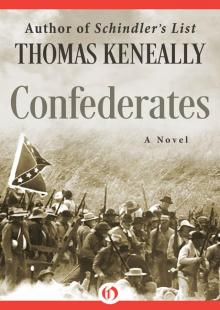 Confederates
Confederates Flying Hero Class
Flying Hero Class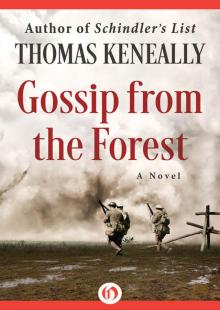 Gossip From the Forest
Gossip From the Forest Schindler's List
Schindler's List Bring Larks and Heroes
Bring Larks and Heroes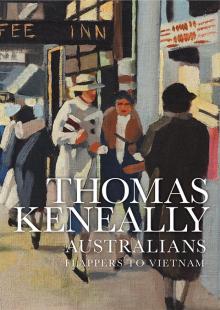 Australians: Flappers to Vietnam
Australians: Flappers to Vietnam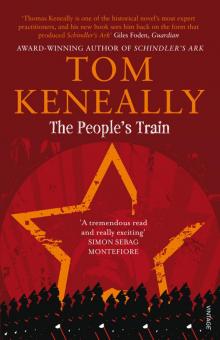 The People's Train
The People's Train Crimes of the Father
Crimes of the Father A Family Madness
A Family Madness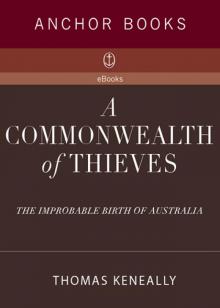 A Commonwealth of Thieves
A Commonwealth of Thieves Ned Kelly and the City of Bees
Ned Kelly and the City of Bees A River Town
A River Town Bettany's Book
Bettany's Book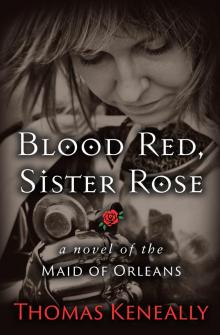 Blood Red, Sister Rose: A Novel of the Maid of Orleans
Blood Red, Sister Rose: A Novel of the Maid of Orleans Victim of the Aurora
Victim of the Aurora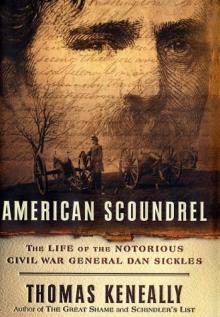 American Scoundrel American Scoundrel American Scoundrel
American Scoundrel American Scoundrel American Scoundrel Three Cheers for the Paraclete
Three Cheers for the Paraclete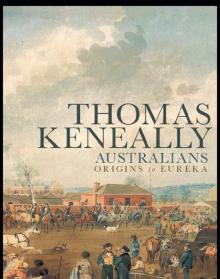 Australians: Origins to Eureka: 1
Australians: Origins to Eureka: 1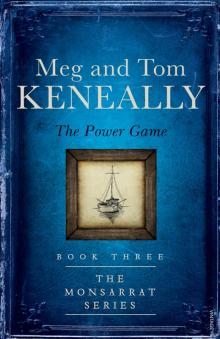 The Power Game
The Power Game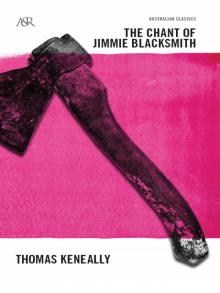 The Chant Of Jimmie Blacksmith
The Chant Of Jimmie Blacksmith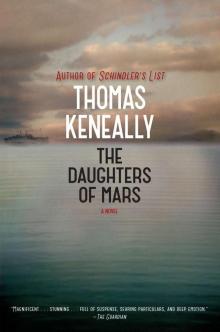 The Daughters of Mars
The Daughters of Mars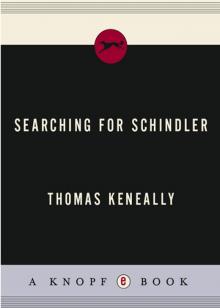 Searching for Schindler
Searching for Schindler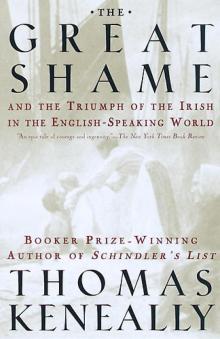 The Great Shame: And the Triumph of the Irish in the English-Speaking World
The Great Shame: And the Triumph of the Irish in the English-Speaking World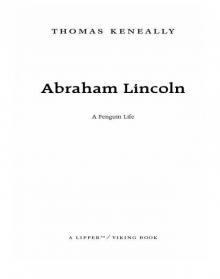 Abraham Lincoln
Abraham Lincoln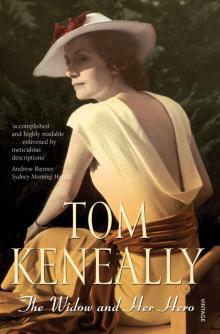 The Widow and Her Hero
The Widow and Her Hero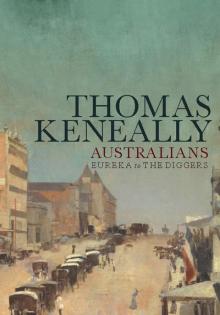 Eureka to the Diggers
Eureka to the Diggers Shame and the Captives
Shame and the Captives The Survivor
The Survivor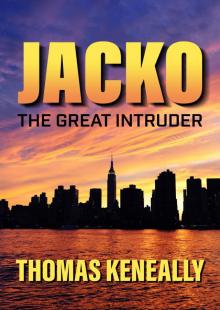 Jacko: The Great Intruder
Jacko: The Great Intruder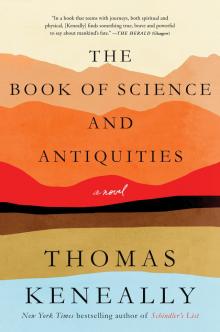 The Book of Science and Antiquities
The Book of Science and Antiquities Homebush Boy
Homebush Boy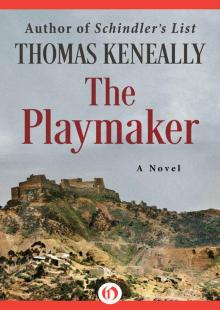 The Playmaker
The Playmaker To Asmara: A Novel of Africa
To Asmara: A Novel of Africa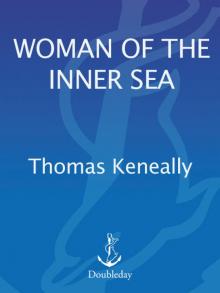 A Woman of the Inner Sea
A Woman of the Inner Sea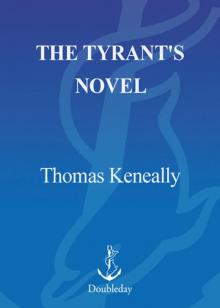 The Tyrant's Novel
The Tyrant's Novel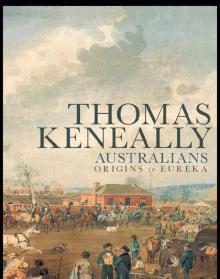 Australians
Australians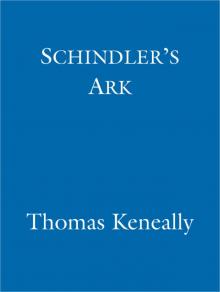 Schindler's Ark
Schindler's Ark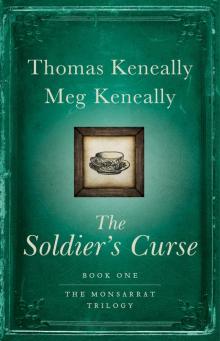 The Soldier's Curse
The Soldier's Curse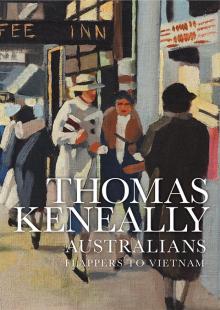 Australians, Volume 3
Australians, Volume 3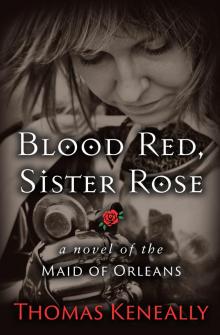 Blood Red, Sister Rose
Blood Red, Sister Rose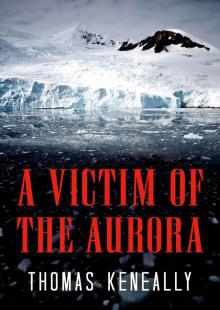 A Victim of the Aurora
A Victim of the Aurora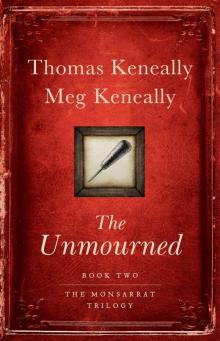 The Unmourned
The Unmourned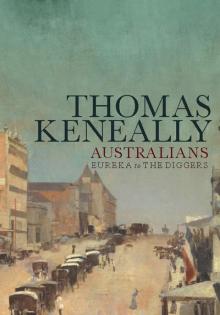 Australians, Volume 2
Australians, Volume 2 To Asmara
To Asmara